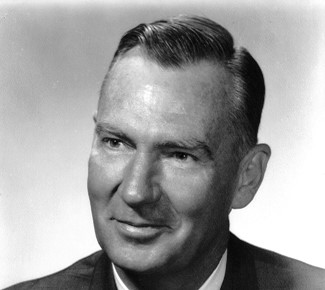ADVERTISEMENT
EMS Hall of Fame: The Pioneers of Prehospital Care—Laerdal, Ferneau
The short history of EMS has been driven by the wisdom, foresight, and innovation of countless individuals. As the field ages into its second half-century and its origins fade to the past, it’s worth commemorating the greatest pioneers of prehospital emergency medical services. This series honors these trailblazers.
Asmund Laerdal
Laerdal Medical, Resusci Anne
Today one of the world’s biggest names in medical products, Asmund Laerdal’s namesake company began in 1940 as a publisher of greeting cards and children’s books. It moved into producing wooden toys and, by the 1950s, items from soft plastics such as realistic dolls and, ultimately, the pioneering training manikin Resusci Anne.
In 1958 a representative of the Norwegian Civil Defense approached Laerdal about creating a plastic mask for rescuers to practice mouth-to-mouth breathing. Laerdal consulted with anesthesiologist Bjorn Lind, who directed him to resuscitation pioneer Peter Safar in the U.S. Laerdal visited Safar with a developmental model of a full mouth-to-mouth manikin—a life-size, lifelike device, rather than a mask, he reasoned, would better motivate rescuers to learn this important skill. Safar’s team loved the idea, offered some suggestions, and Anne debuted in 1960. Her face was modeled after an anonymous young woman whose body was pulled from the River Seine in the late 1800s. Her identity was never learned, but she’s now said to have the “most-kissed lips in history.”
By 1961, with increasing emphasis on chest compressions, a chest string upgraded Anne to a full CPR manikin. In 1964 she got a recorder and pulse, and other innovations followed. “Without Laerdal products,” wrote Safar in a memoriam, “CPR would never have been implemented as rapidly and broadly as it was and would never have reached the lay public.”1
Laerdal also launched resuscitation conferences in his home country, supported the AHA’s standards meetings, and became a patron of other important work to advance resuscitation. In 1978 he became the first nonphysician to receive the AHA’s International Award. He died of cancer in 1981. “He was a great man, whose quiet but determined manners and eagerness to help whenever he perceived a need earned him much respect and love,” wrote Safar.1
Reference
1. Safar P. In Memoriam Asmund S. Laerdal. J World Assoc Emerg Disaster Med, 1985; 1: Suppl. 1.
Dick Ferneau
Ferno, adjustable cot
Dick Ferneau began benefiting EMS providers while advancing his career in the mortuary business.
During more than three decades with Ohio’s Washington Mortuary Supply Company, he pioneered the use of aluminum tubing rather than steel, greatly reducing the weight of cots. Ambulance builders happily converted to the new models, which soon became an industry standard. He later developed the first elevating ambulance cot in 1952.
Then in 1955 Ferneau ventured out on his own, assembling a team skilled in pattern making and machining engineering parts, then adapted his surname into his new company, Ferno. The next year he met Elroy Bourgraf, a young veteran with experience in the mortuary market, and they soon joined forces. By 1958 Ferno offered its own popular one-man mortuary cot that helped propel rapid expansion. Today Ferno has grown into a world leader in EMS, rescue, and mortuary products.
In 1961 Ferneau and Bourgraf bought the Washington Mortuary Supply Company, Ferneau’s old employer, creating Ferno-Washington Inc. Growth continued with new designs in the ’70s and ’80s; the company, now known just as Ferno, remains a primary player in the patient-transport world.
Ferneau worked over the years to improve both patient comfort and provider experience with a series of elevating and variable-height cots, roll-in mortuary and ambulance cots. Today’s H-frame, X-frame (inspired by a secretary’s ironing board), and independent leg cots are all derived from his designs. He also developed tooling for mortuary use and the “slimline” hinge used in folding stretchers and carrying chairs.
At his death in 2009 Ferneau held 16 U.S. patents, and his name now adorns the National EMS Awards of Excellence’s honor for Paid EMS Service of the Year.
John Erich is the senior editor of EMS World.











